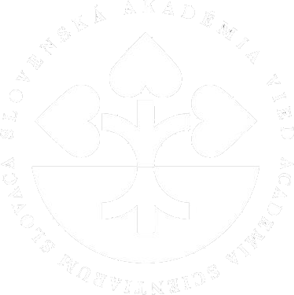SASPRO
SASPRO Program – is a program of the Slovak Academy of Sciences designed for experienced scientists from abroad who are interested in working in organizations of the Slovak Academy of Sciences. The program allows them to apply for a working stay of 12 to 36 months, while the scientific field in which they can apply is not limited.
The main objective of the SASPRO Program is to provide incoming scientists with appropriate and motivating conditions to enable them to develop their careers, gain new experience and establish international cooperation. Equally important is the effort to support the return of Slovak scientists from abroad back to Slovakia.

Ing. Ľuboš Čipák, Ph.D.
Genome instability is defined as a process leading to changes in the genome of cells. Changes or disorders in cell division regulating processes, such as pre-mRNA splicing, DNA repair, or chromosome segregation, can lead to genome instability.
The complexity of the processes involved in cell division indicates that these processes are strictly regulated. Protein kinases belong to proteins regulating the activity, localization and molecular function of several proteins. The project is focused on the identification of substrates of essential protein kinases and on the closer characterization of the biological importance of phosphorylation of proteins involved in the regulation of pre-mRNA splicing and chromosome segregation.
In the framework of the project, we were able to identify proteins interacting with S. pombe yeast protein kinases and point out the possible role of phosphorylation in regulating pre-mRNA splicing processes and chromosome segregation. A detailed analysis of post-translational modifications of proteins interacting with the studied protein kinases identified previously uncharacterized phosphomodifications of these proteins. The ongoing detailed phenotypic/genetic analysis of the prepared phosphor mutants aims to reveal the molecular mechanism of the dynamic regulation of pre-mRNA splicing and chromosome segregation, respectively.

PharmDr. Tereza Goliaš, Ph.D.
Glycolytic metabolism meets the requirements for cell growth in the hypoxic tumor microenvironment and helps them survive. In addition, the ability to respond to reduced oxygen partial pressure by inducing carbon anhydrase IX (CAIX) and pyruvate dehydrogenase kinase 1 (PDHK1), which have roles in pH regulation and glucose metabolism, appears to be necessary for tumor xenograft growth and high expression in human tumors are associated with poor patient prognosis.
These two hypoxia-regulated proteins, therefore, represent promising targets for the design of new, non-standard chemotherapeutic agents that would negatively affect tumor cell proliferation and survival while avoiding toxicity to healthy tissues or enhancing the efficacy of standard therapeutics.
This project examines molecular mechanisms regulating CAIX and PDHK1 in a hypoxic microenvironment and attempts to target them in colorectal tumors while stratifying patients who would benefit from such targeted tumor microenvironment therapy and improve their survival.

Mgr. Andrea Bábelová, Ph.D.
More than 40 so-called “nanomedicine” products are currently available for the treatment and diagnosis of various diseases including cancer, and many others are undergoing clinical trials. Nevertheless, only a very limited amount of scientific literature deals with the effects of nanoparticles on the kidney. The kidneys are a unique organ with a high degree of heterogeneity due to specialized cell types characterized by a characteristic profile of the expressed genes and a very specific function. Substances that induce structural changes in these cells result in altered gene expression and related cell functionality. Different kidney cell types are differently susceptible to toxic substances that accumulate in the kidneys, including nanoparticles. It has even been shown that nanoparticles can induce a glomerulonephritis-like toxic reaction in the kidneys, which damages all types of glomerular cells, such as mesangial cells, fibroblasts, or podocytes.
Impairment of the cell stability of these cells is believed to be a cause of dramatically reduced glomerular filtration capacity known in nephrotic kidneys. The main objective of the project is to investigate the interactions of nanomaterials (gold and iron oxide nanoparticles) and contractile mesangial cells that underpin the entire glomerular structure, as well as post-mitotic podocytes, which are an irreplaceable component of the renal filter. renal function, and thus the loss of overall homeostasis of the organism.
Renal toxicity studies are essential with the simultaneous expansion of nanoparticles into the biomedical field in order to detect damage caused by nanomaterials and thereby prevent possible health risks.

Mgr. Ivana Nemčovičová, Ph.D.
The characterization of the molecular and structural bases of the host-viral protein interactions is therefore important for our further understanding of the immune balance in the body that occurs during viral infection and why disruption of this balance results in the disease. As is well known, receptors and ligands from the immunoglobulin (Ig) family of tumor necrosis factor (TNF) molecules play a critical role in host defense, and it is important to clarify the strategies that the virus uses to influence the immune response. Human cytomegalovirus is a very widespread herpes virus in the population and is currently the clinically most important causative agent of opportunistic infections in immunodeficient patients. HCMV is the world’s paradigm for an effective escape from our immune system; its key ability to induce latency in its host upon overcoming a primary infection, and the ability to reactivate at any time due to a weakened immune system together, effectively suppress the protective function of NK and T cells in the body.
To this end, we plan to recombinantly prepare, characterize and determine expression and purification profiles of both viral and human genes that are associated with cytotoxicity and viroprotectivity processes in the cell, and these processes will also be studied. We expect that by this multidisciplinary approach we will be able to design and characterize suitable candidates with immunomodulatory effects.
In short, the aim of the project is to elucidate the mechanisms by which HCMV effectively escapes the immune system at the molecular level. This project also contributes to the development of immunomodulatory biological agents for the treatment of HCMV infection. In addition, a detailed investigation of the persistence of HCMV shifts the possibility of its use as a unique carrier for vaccines in the treatment of cancer or other autoimmune diseases.

RNDr. Jana Jakubíková, Ph.D.
The project is focused on the issue of intraclonal heterogeneity in multiple myeloma – blood malignancy of the B-lymphocyte lineage, which results from the clonal proliferation of malignant plasma cells in the bone marrow. The main aim of the project is to identify clonal heterogeneity in the examined samples, intraclonal dynamics in the process of disease progression as well as phenotypic changes of individual bone marrow components during the transition from premalignant stage to malignant disease.
An important part of the project is to evaluate the impact of chemotherapy and immunotherapy on the dynamics of the clonal composition and to study the role of the tumor microenvironment on clonal selection.
The knowledge gained is used for the development of new personalized diagnostic criteria and therapeutic approaches directed against coexisting tumor subclones.







